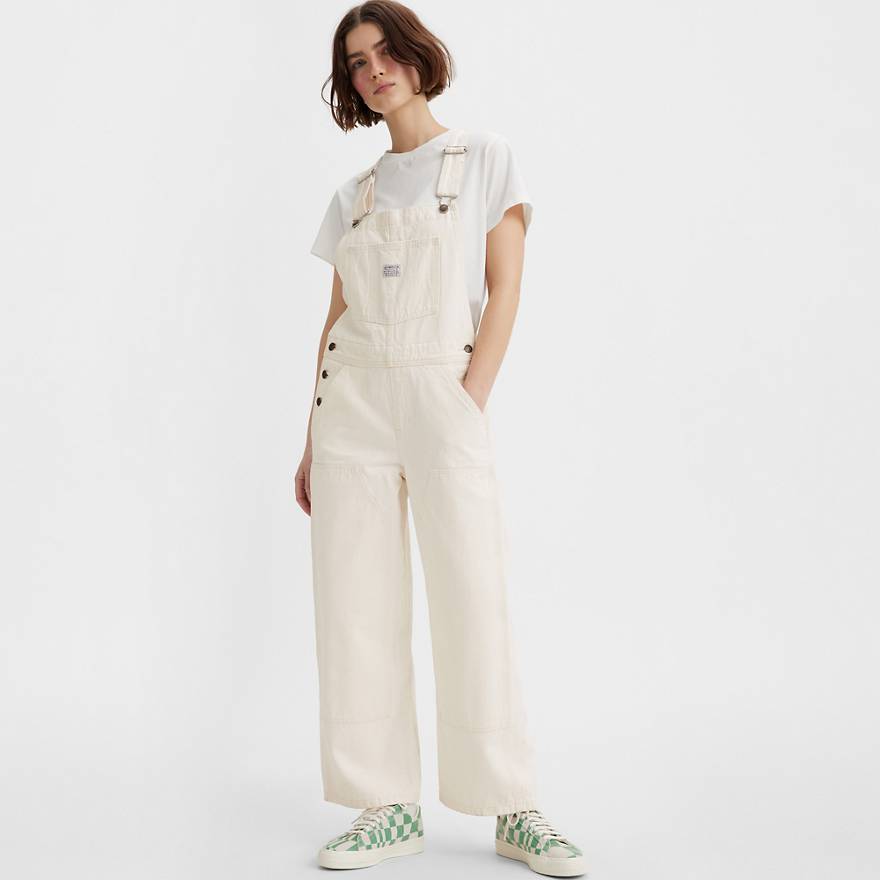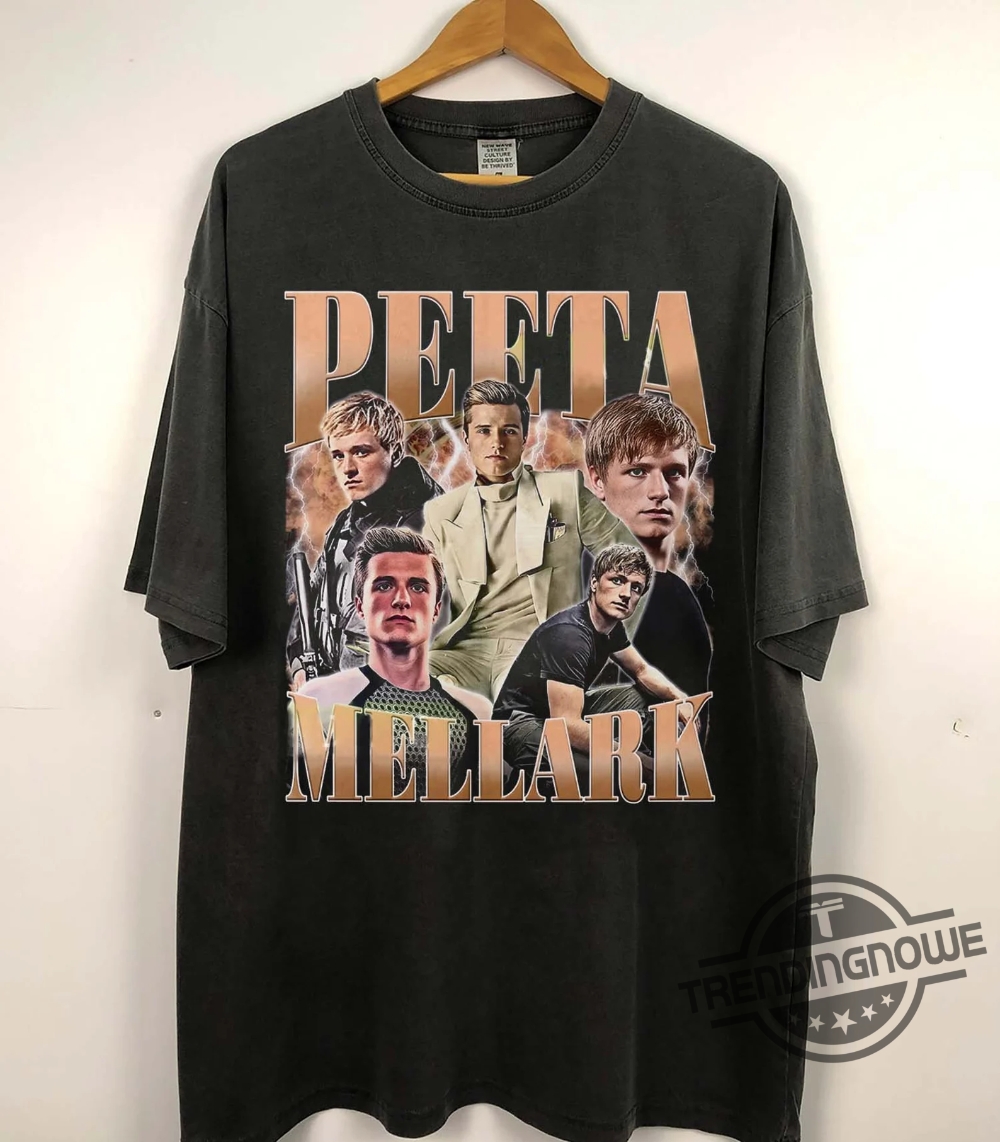We’ve already begun a rich exploration into the world of “Dia de Los Muertos dress-up,” encompassing its historical roots, cultural significance, artistic expressions, and more. Now let’s continue to delve deeper into this vibrant tradition, exploring not only its past and present but also looking toward its future, considering sustainability, global influence. And the ways in which it continues to evolve and inspire communities around the globe.
Cultural Expressions Through Costumes
Reflecting Ancestral Heritage
“Dia de Los Muertos” (Day of the Dead) dress-up is a profound way for individuals to connect with and honor their ancestors. Traditional costumes often include elements that are tributes to deceased family members, incorporating specific colors, patterns. Or symbols that were meaningful to those who have passed away. This personal aspect of the dress-up creates a deeply individualized connection to the tradition, making it a unique expression of familial heritage and memory.
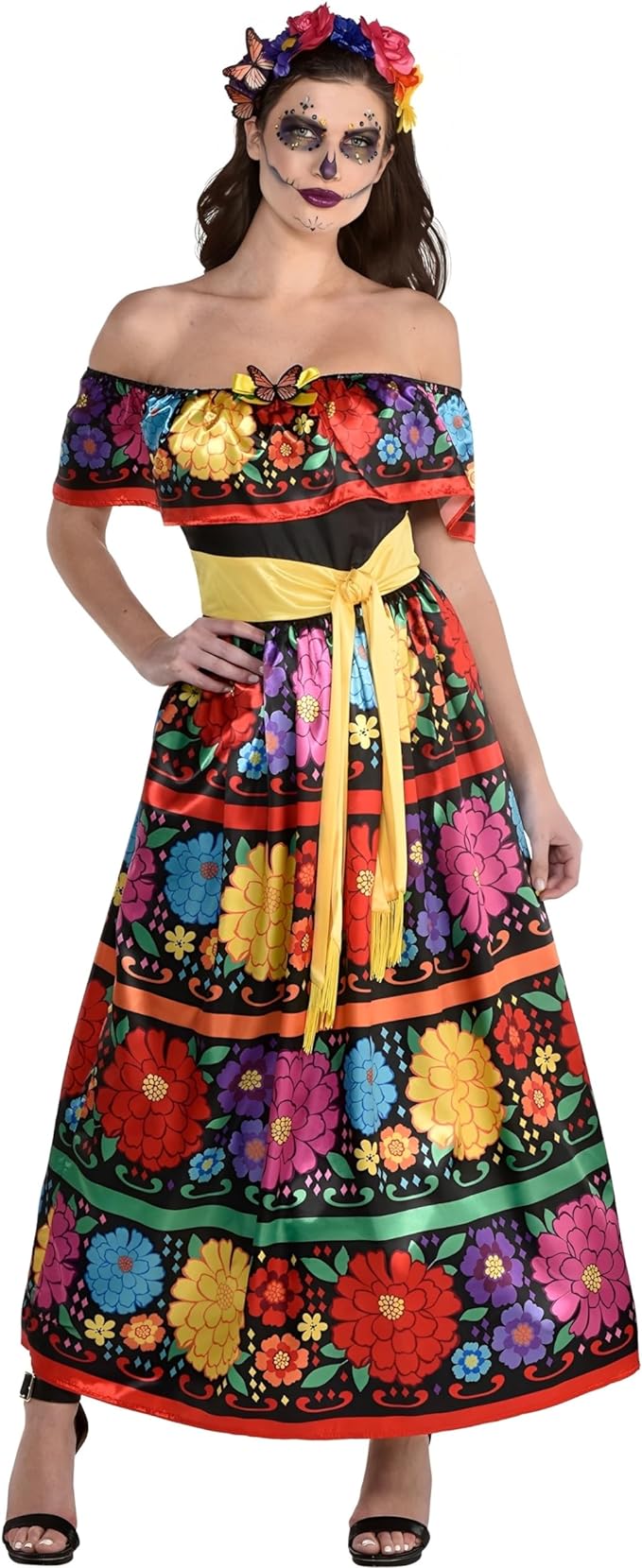
Artistic and Creative Outlets
The creation of “Dia de Los Muertos” costumes and makeup is an art form in its own right, offering individuals a canvas to express their creativity and cultural pride. The meticulous attention to detail found in sugar skull makeup, floral arrangements. And the vibrant array of fabrics used in costumes exemplifies a celebration of life through art. Community workshops and gatherings provide spaces for learning and sharing these artistic traditions, nurturing a sense of communal identity and support.
Integration Within Modern Celebrations
Fusion with Contemporary Culture
As “Dia de Los Muertos” gains prominence in various parts of the world. Its traditional dress-up practices have begun to merge with contemporary cultural expressions. This fusion is evident in the incorporation of modern fashion elements, digital art forms, and pop culture references into costumes and makeup. Such adaptations signify the evolving nature of the celebration, showcasing its ability to remain relevant and accessible to younger generations and diverse communities.
Fusion with contemporary culture has propelled Dia de Los Muertos beyond its traditional boundaries, creating a vibrant hybridization that resonates in today’s globalized society. The intermingling with contemporary art, technology, and aesthetics has not diluted its essence; rather, it has amplified its voice, allowing it to speak to a modern audience. Fashion designers might draw inspiration from the iconic ‘La Catrina’ figure, remixing Victorian-era dresses with modern streetwear to invoke both the past and the present. Makeup artists turn to digital platforms like Instagram and YouTube, showcasing futuristic neon calaveras or intricate designs that push the boundaries of tradition while still paying homage to it. Pop culture elements. Such as motifs from well-loved movies or music icons, weave their way into the fabric of costumes. Creating a dialogue between time-honored customs and contemporary icons that many admire.
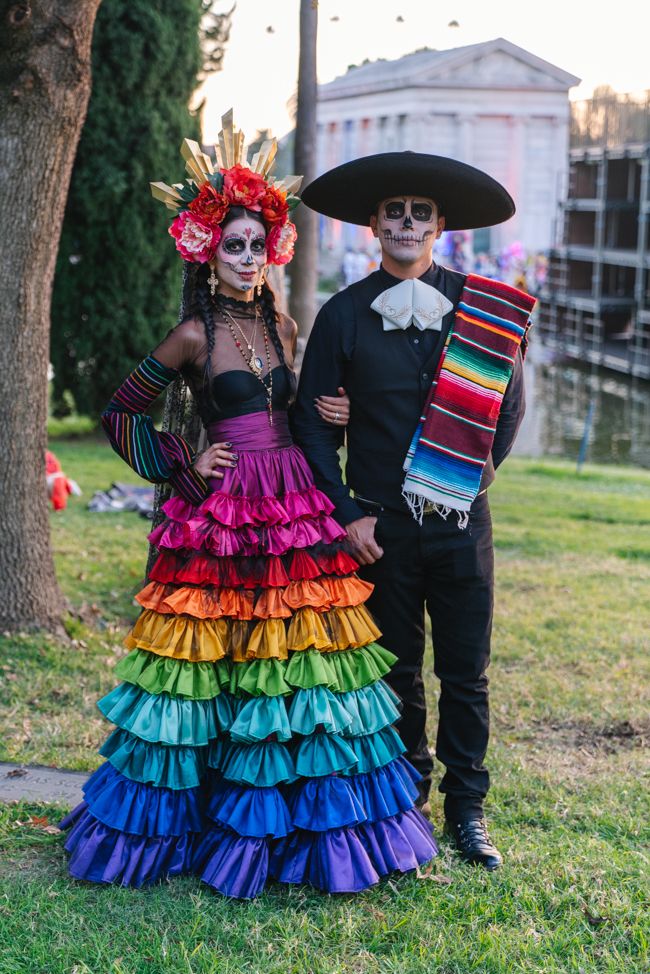
Educational Opportunities and Awareness
The visibility of “Dia de Los Muertos” dress-up in public celebrations, media. And art installations serves as a powerful tool for cultural education and awareness. Schools, museums, and cultural centers increasingly include “Dia de Los Muertos” in their programming, providing informative experiences that highlight the significance behind the tradition’s symbols and customs. This educational aspect fosters appreciation and respect for cultural diversity, encouraging inclusivity and understanding across different communities.
Simultaneously, educational opportunities and awareness have surged, reflecting the dress-up’s ability to captivate and educate a broad audience. As face paint adorns cheeks and vibrant costumes line the streets, they become living canvases that tell stories of heritage and history. Educational institutions leverage this allure, integrating Dia de Los Muertos into curricula and special events. Workshops teach the meticulous art of crafting tissue-paper marigolds or the historical significance behind the sugar skulls (calaveritas). Museums may host exhibits that feature altars (ofrendas) adorned with traditional dress, offering patrons a tactile journey through the symbolism and spirit of the celebration. These initiatives not only preserve the rich tapestry of Mexican culture but also integrate it into the fabric of global diversity, enlightening a curious world and fostering a shared respect for the meaningful profundity of this ancestral festivity.
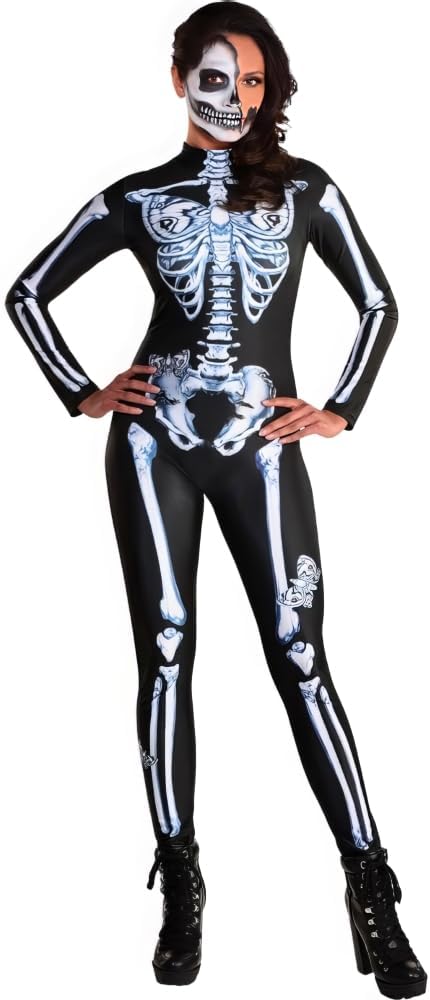
The Global Impact of Dress-Up Traditions
Spreading Cultural Heritage Worldwide
Moreover, The international recognition of “Dia de Los Muertos” serves as a testament to the universal themes of remembrance, love, and celebration of life that the tradition encompasses. The dress-up aspect, in particular, plays a crucial role in spreading Mexican cultural heritage worldwide. Enticing people from various backgrounds to participate in and learn about this rich tradition. This global exchange enriches the cultural tapestry of communities around the world, promoting cross-cultural dialogue and mutual respect.
Challenges and Considerations
With the globalization of “Dia de Los Muertos,” concerns regarding cultural appropriation and the commercialization of traditional practices have emerged. It’s vital for both organizers and participants to approach the dress-up tradition with sensitivity and respect, ensuring that its deep cultural and spiritual significance is honored. By prioritizing authentic representations and educating the public about the tradition’s roots. Communities can celebrate “Dia de Los Muertos” in a way that respects its origins and maintains its integrity.
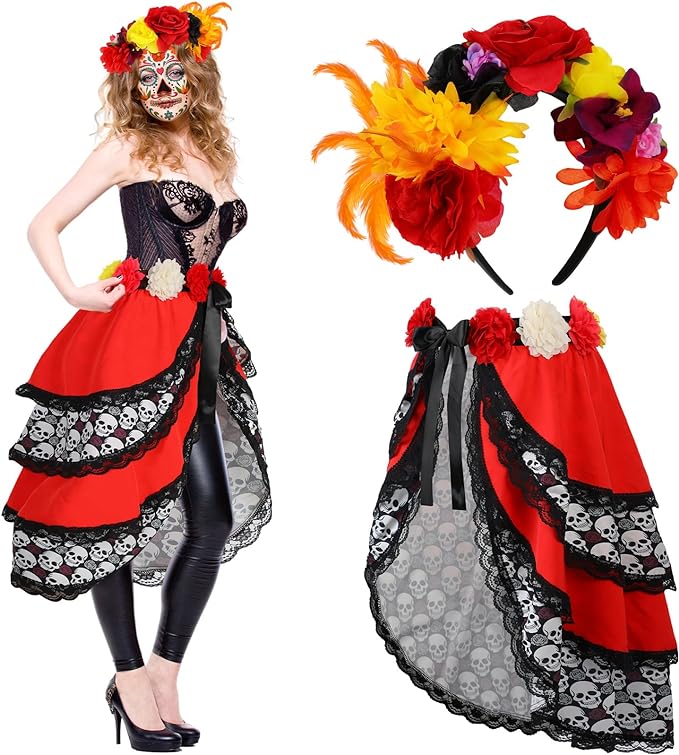
Future Directions and Sustainability
Eco-Friendly Practices in Celebration
As environmental awareness rises, incorporating sustainable practices into “Dia de Los Muertos” dress-up becomes increasingly important. Using biodegradable materials for costumes, natural makeup. And locally sourced flowers for adornments are ways in which individuals and communities can minimize their ecological footprint while celebrating. By adapting eco-conscious approaches. The tradition can continue to thrive in harmony with the planet, ensuring its preservation for future generations.
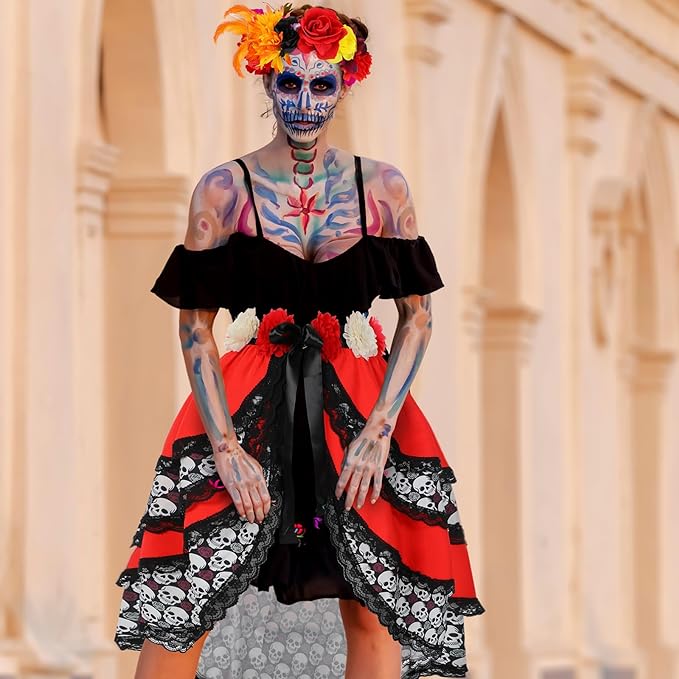
Technology and Innovation in Tradition
Advancements in technology offer new avenues for exploring and sharing the “Dia de Los Muertos” dress-up tradition. Virtual reality (VR) experiences, digital storytelling, and online platforms can provide immersive educational tools, allowing people to engage with the tradition from anywhere in the world. These innovations can also offer creative new methods for costume and makeup design. Blending traditional techniques with modern technology to create novel expressions of the celebration.
Conclusion
Finally, “Dia de Los Muertos” dress-up is a rich, multifaceted tradition that embodies the spirit of remembrance, love, and cultural pride. As it continues to evolve and adapt to modern contexts. It remains a powerful means of connecting with heritage, expressing creativity, and fostering global cultural exchange. By embracing innovation while respecting tradition, communities can ensure that this beautiful expression of life, death. And memory continues to inspire and unite people across the world for generations to come.

